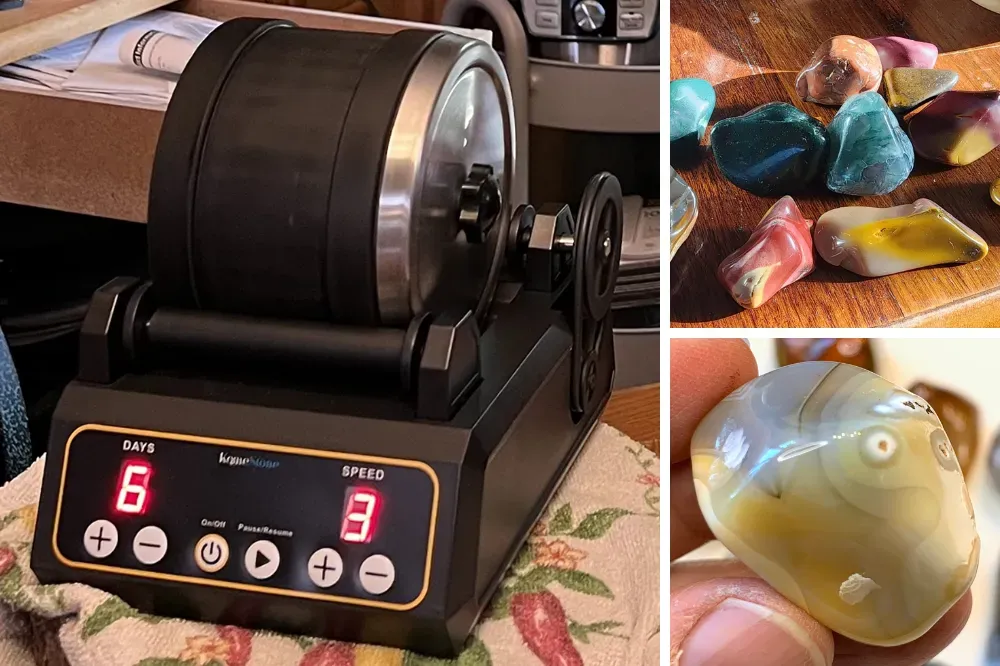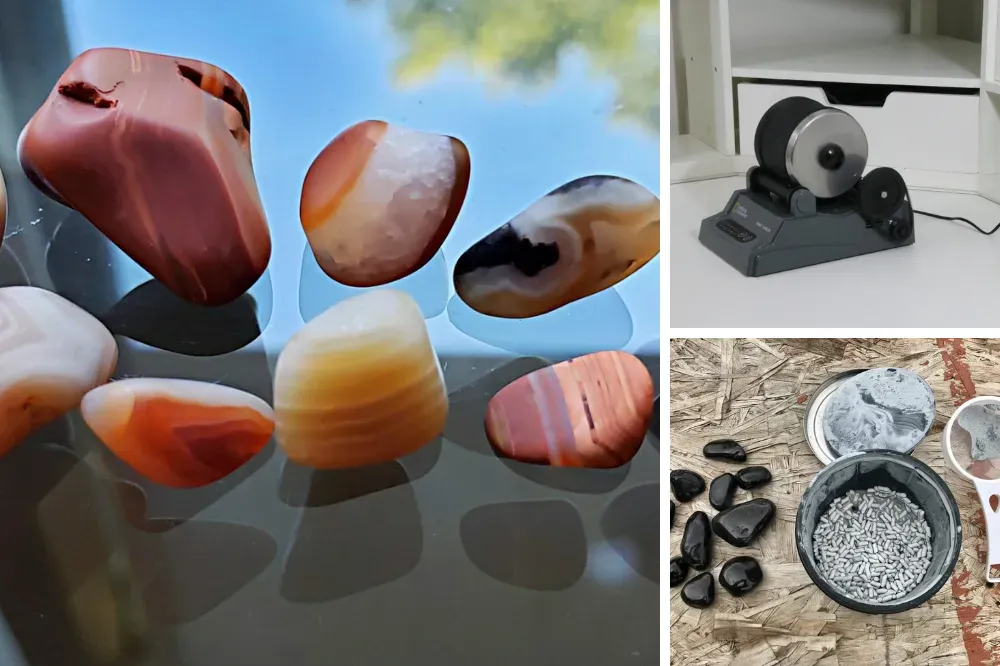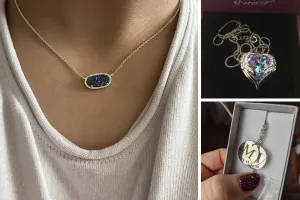Key Takeaways:
- Understanding Rock Tumblers: Learn about the different types of rock tumblers and their unique features.
- Choosing the Right Tumbler: Discover the best rock tumblers available and what makes them stand out.
- Rock Tumbling Process: Get insights into the rock tumbling process, including the stages and materials needed.
Introduction
Rock tumbling is a fascinating hobby that transforms rough rocks into beautifully polished stones. Rock tumblers are used for rock polishing, transforming rough rocks into polished, gem-like stones. Whether you're a beginner or a seasoned rock hound, finding the best rock tumbler is crucial for achieving excellent results. This article will guide you through the different types of rock tumblers, their features, and how to choose the best tumbler for your needs.
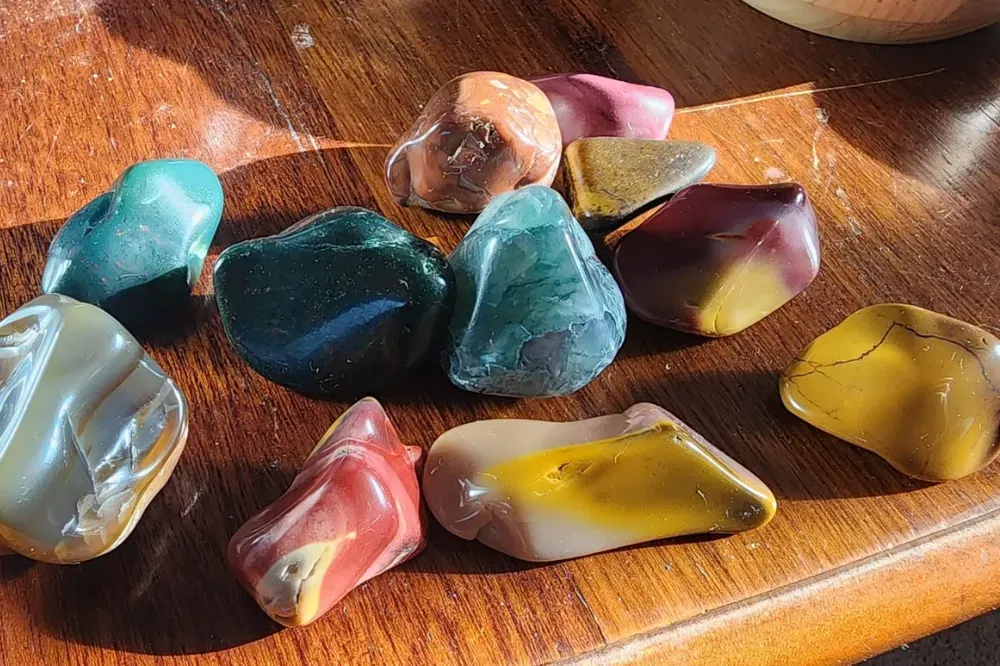
Types of Rock Tumblers
Rotary Rock Tumblers
Rotary rock tumblers are the most popular type of rock tumblers. They use a rotating barrel to polish rocks over several weeks. These rotary tumblers are ideal for beginners because they are easy to use and produce nicely rounded corners on the rocks, making them excellent for shaping and smoothing. The Lortone rock tumblers are a great example of high-quality rotary tumblers.
Vibratory Rock Tumblers
Vibratory rock tumblers, on the other hand, use a vibrating motion to polish rocks. They are meant to supplement rotary tumblers and have a different learning curve. They are faster than rotary tumblers and are often used for polishing sea glass and other delicate materials. Vibratory tumblers are a better option for those who want to achieve a smooth finish in a shorter amount of time.
Choosing the Best Rock Tumbler
Lortone Rock Tumblers
Lortone rock tumblers are known for their high-quality rubber barrels, which reduce noise and promote better rolling of rocks. These rubber barrels help muffle the noise, providing a more pleasant sound resembling waves at the beach and offer a cushioned surface to prevent damage to the rocks. They come in various sizes, including single-barrel and double-barrel options. The Lortone 3A is a popular choice for beginners, while the Lortone QT12 is suitable for more advanced users.

National Geographic Hobby Rock Tumbler
The National Geographic Hobby Rock Tumbler is an excellent choice for beginners and children. It comes with a complete kit that includes rough gemstones, polishing grit, and detailed instructions. This tumbler is designed to be user-friendly and provides a fun hobby for people of all ages.
Rock Tumbling Kits
Starter Kits
Starter kits are perfect for those new to rock tumbling. They typically include a rock tumbler, polishing grit, rough rocks, and an instruction manual. The National Geographic Hobby Rock Tumbler Kit is a great example of a comprehensive kit that provides everything you need to get started.
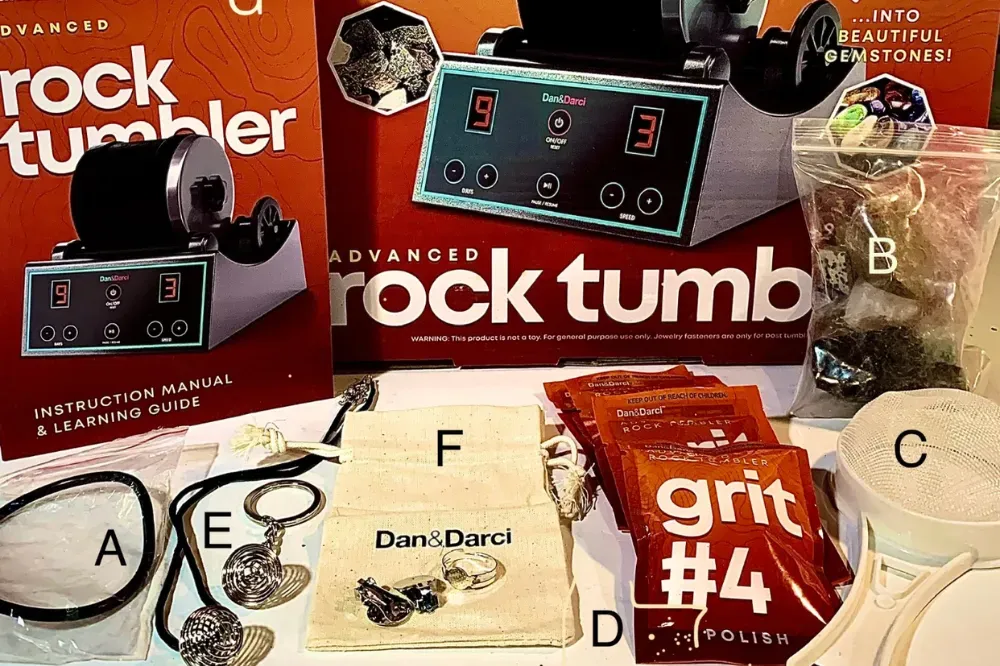
Advanced Kits
For more experienced rock hounds, advanced kits offer additional features and materials. These kits may include multiple barrels, adjustable speed settings, and a variety of polishing grits. The Lortone QT66 is an advanced kit that comes with two three-pound barrels, making it ideal for polishing larger batches of rocks.
Rock Tumbling Process
Stages of Rock Tumbling
The rock tumbling process involves several stages, each using different levels of grit. The first stage uses coarse grit to remove rough edges and shape the rocks. The second stage uses medium grit to smooth the rocks further. The final stage uses fine grit and a polishing compound to achieve a shiny finish.
Polishing Grit
Polishing grit is an essential component of the rock-tumbling process. It comes in various grades, including coarse, medium, and fine. Silicon carbide is a common type of grit used in rock tumbling. To achieve the best results, it's important to use the right grit for each stage.
Features to Consider
Barrel Material
The material of the tumbler barrel is crucial for noise reduction and durability. High-quality rubber barrels are preferred because they produce minimal noise and are long-lasting. Plastic barrels are also available but may not be as durable.
Noise Level
Noise level is an important consideration, especially if you plan to use the tumbler indoors. Tumblers with soft rubber barrels and noise-reduction features are ideal for quiet operation. The Lortone rock tumblers are known for their low noise levels.
Popular Brands
Lortone
Lortone is a well-known brand in the rock-tumbling community. It offers a range of high-quality tumblers suitable for both beginners and advanced users. The tumblers are known for their durability and excellent results.
National Geographic
National Geographic offers a variety of rock tumbling kits designed for beginners and children. Their kits are user-friendly and come with everything needed to start tumbling rocks. The National Geographic Hobby Rock Tumbler is a popular choice for its ease of use and comprehensive kit.
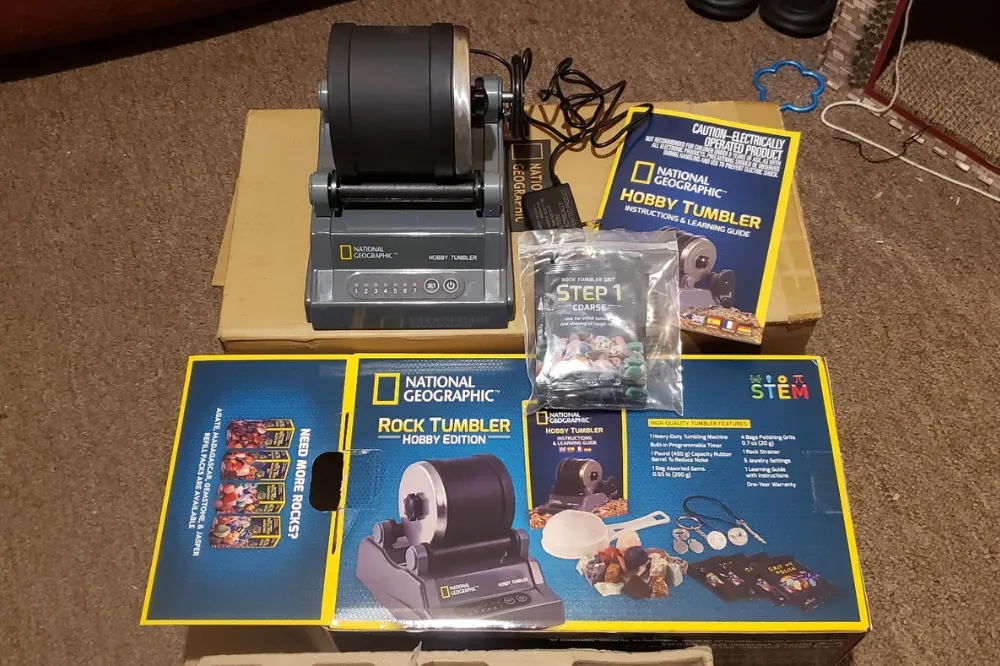
Rock Types
Rough Rocks
Rough rocks, such as agate, jasper, and quartz, are the starting material for rock tumbling. It's important to choose rocks that are similar in hardness to achieve uniform results.
Sea Glass
Sea glass is another material that can be polished using a rock tumbler. Vibratory tumblers are ideal for polishing sea glass because they are gentler and faster than rotary tumblers. The result is smooth, frosted pieces of glass that are perfect for jewelry making.
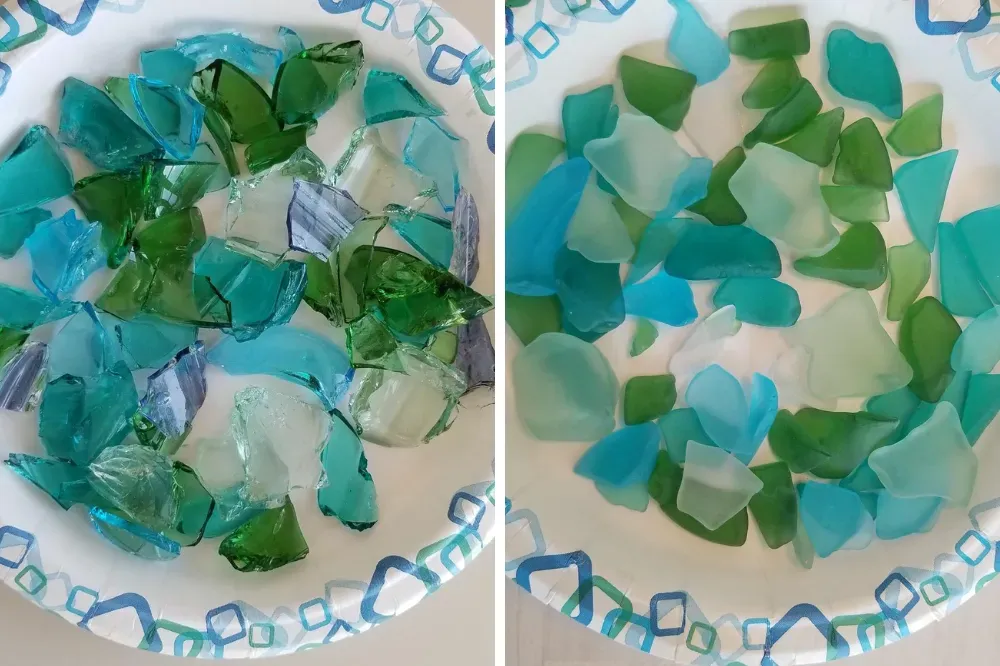
Accessories
Plastic Pellets
Plastic pellets are used as filler material in the tumbler barrel. They help cushion the rocks and prevent them from chipping during the tumbling process. Plastic pellets are especially useful in the final polishing stage.
Ceramic Media
Ceramic media is another type of filler material used in rock tumbling. It helps to distribute the polishing grit evenly and provides a smoother finish. Ceramic media is reusable and can be used in multiple tumbling cycles.
Maintenance
Replacement Belts
Replacement belts are essential for keeping your rock tumbler in good working condition. Over time, the belts may wear out and need to be replaced. It's a good idea to keep spare belts on hand to avoid interruptions in the tumbling process.
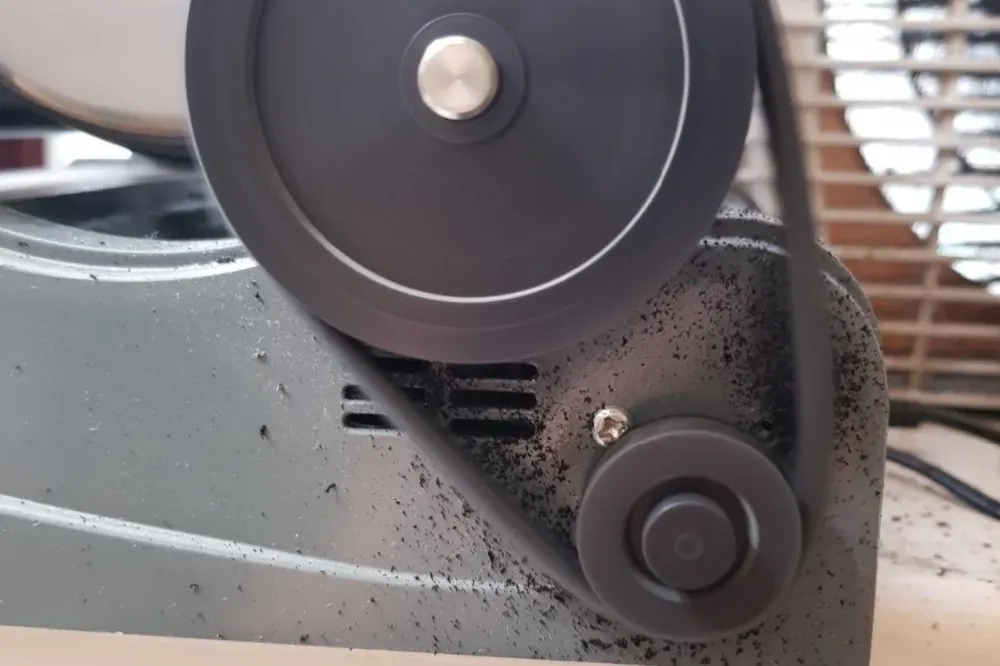
Cleaning the Barrel
Cleaning the tumbler barrel is important to prevent contamination between different stages of the tumbling process. After each stage, thoroughly clean the barrel and any accessories to remove any remaining grit and debris.
Tips for Best Results
Sorting Rocks
Sorting rocks by size and hardness is crucial for achieving the best results. Tumbling rocks of similar size and hardness together ensure uniform polishing and prevent damage to softer stones.
Using the Right Grit
Using the right grit for each stage of the tumbling process is essential. Start with coarse grit to shape the rocks, then move to medium grit for smoothing, and finish with fine grit and polishing compound for a shiny finish.
Common Mistakes
Overloading the Barrel
Overloading the tumbler barrel can lead to poor results and damage to the tumbler. It's important to follow the manufacturer's guidelines for the maximum amount of rocks that can be tumbled at once.
Skipping Stages
Skipping stages in the tumbling process can result in unevenly polished rocks. Each stage is important for achieving a smooth, shiny finish. Be patient and follow the recommended steps for the best results.
Case Studies
Beginner's Success
Jane, a beginner rock hound, started with the National Geographic Hobby Rock Tumbler Kit. She followed the detailed instructions and was thrilled with the shiny stones she produced. The kit's user-friendly design and comprehensive materials made it easy for her to achieve great results.
Advanced User's Experience
Tom, an experienced rock hound, upgraded to the Lortone QT66. With its two three-pound barrels and adjustable speed settings, he was able to polish larger batches of rocks more efficiently. Tom appreciated the tumbler's durability and the excellent results it produced.
Summary
Rock tumbling is a rewarding hobby that transforms rough rocks into beautiful, polished stones. Whether you're a beginner or an experienced rock hound, choosing the best rock tumbler is essential for achieving excellent results. From rotary rock tumblers to vibratory rock tumblers, various options are available to suit your needs. Consider factors such as barrel material, noise level, and the type of rocks you want to polish when selecting a tumbler. With the right equipment and a little bit of patience, you can enjoy the fun hobby of rock tumbling and create a great collection of shiny stones.
FAQ
What is the best rock tumbler for beginners?
The National Geographic Hobby Rock Tumbler is an excellent choice for beginners. It comes with a complete kit that includes rough gemstones, polishing grit, and detailed instructions, making it easy to get started.
How long does the rock tumbling process take?
The rock-tumbling process typically takes several weeks. Each stage, from coarse grit to final polish, can take about a week. Patience is key to achieving the best results.
Can I tumble different types of rocks together?
It's best to tumble rocks of similar hardness together to achieve uniform results. Mixing rocks of different hardness can lead to uneven polishing and potential damage to softer stones.
